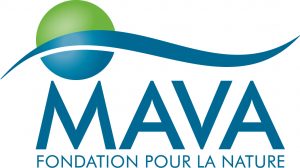Scientific Writing and Publishing
Course Dates:
25 July – 5 September 2022
Location:
Online
Application Deadline:
Midnight (BST) Monday 25 July 2022
This course will help conservation scientists communicate the importance and impact of their work to the wider scientific community. Participants will gain all the essential skills and know-how they need to publish a scientific paper. You will learn how to structure your paper, how to write clearly and succinctly and how to present your results. You will discover how the publication process works from selecting a journal to dealing with reviewers’ comments.
Publishing research is an important way that the wider community can access useful information that can help shape conservation decisions and future research directions. It also improves career opportunities for young researchers and helps attract collaborators and funding. If you would like to become a more active player in this community then this course is for you.
This dynamic and interactive course combines live teaching sessions with self-paced online learning using TBA’s stimulating virtual learning environment. We give one-to-one feedback on your own work and no question is left answered by our expert tutors.
Our teaching draws on twenty years experience of teaching and is based on our successful online and face to face training workshops. People who have attended our past workshops have been able to publish their work based on the new skills they acquired.
Taught by the Tropical Biology Association (TBA)
Supported by MAVA Fondation Pour la Nature
More Information
Format:
Self paced online learning on TBA’s VLE
Three live Zoom sessions
Weekly time commitment:
4 hours per week
1 Zoom session every 2 weeks
Places: 30
Length: 6 weeks
Price: £360
Scholarships available for students from low-income countries.
What We Cover
Module 1: Publishing your work
In this first module we shall explore some of the issues around the challenges and opportunities you may encounter when looking to publish your work. We will look at ways in which you can select appropriate journals to submit your paper and how to avoid the dreaded predatory journals that prey upon the unsuspecting. We have some helpful Top Tips for you to engage the editor and ways you can tactfully and productively respond to reviewer’s comments. Unfortunately, not every submission will result in a publication, and that is a fact of academic life, and we will look at ways you can deal with those feelings of rejection. Finally, we look at new publishing models such as preprints and discuss when you might (or might not) consider using this to disseminate your research.
Module 2: Paper structure & writing skills
Now we move into the structure of the paper, and consider each of the sections from the abstract to conclusion as well as your choice of title. Not only will you learn what to write in each section, you will explore which sections to approach first, and gain feedback on your own work. We will also look at writing skills, since how you write can be as important as what you write. Writing papers requires us to be efficient as well as up to date, and to do this we will consider reference management systems you can adopt. Let’s not forget your choice of journal in the first place – we will discuss the important of following their guidelines and how to ensure your content is well matched to the journal you have chosen.
Module 3: Presenting results, data and visualisations
All of the sections in your paper are important, but the results section provides a snap shot of what you found using visuals and graphics. After all the effort you have put into collecting data and analysing it, now you need to show what you discovered – whether statistically significant or not. This module will guide you through some ways to think about what and how to present your findings. As well as Figures and Tables, there are other ways of presenting results, such as infographics, that can help explain your research in a simple, visually appealing manner.
Putting it all together
Each module gives you an opportunity to put what you have learned into practice through an assignment that you will receive feedback on. We expect that by the end of the course you will have a draft outline of your paper and a good idea of where you wish to publish. You will still have access to the course materials afterwards to help you to do this.
We look forward to seeing you on the course!
How the Course Will Work
25 July – 5 August: Publishing your work
8 August – 19 August: Writing skills
22 August – 2 September: Presenting results, data and visualisations
Who is this course for?
Do you want to boost your career in the conservation and environmental sector? We have designed this course specifically for people who want to get their papers published and raise their professional profile.

What Our Students Say
“I learnt so many things from this course and I now know how to go about being a successful published scientist”
“The course sorted out my confusion about how to choose a journal to publish my work and how I need to structure my paper”
